Is "Mr. Too Late" About to Get Fired?
Sponsored by
Every four years — in rally speeches, on the debate stage, in TV ads — presidential candidates unfurl their grand plans to transform the economy, as if a bunch of big red buttons await them on the Resolute Desk that they can smash at will: “MORE JOBS,” “LOWER PRICES,” “END RECESSION.”
In reality, there isn’t much a president can do by themselves to change economic conditions in the country. (Tariffs are a key exception, as President Trump has recently demonstrated.) The person with arguably the most sway over the direction of the economy does work out of a fancy building in Washington, but it isn’t the president. It’s the chairman of the Federal Reserve, the powerful institution often known simply as “the Fed.”
Bloomberg News has referred to the Fed chair as “Wall Street’s head of state.” USA Today has called being Fed chair the “second most powerful job in the world” — and “possibly No. 1 in times of peace.” The current Fed chair, Jerome “Jay” Powell, doesn’t have buttons on his desk to raise or lower unemployment or inflation, or to start or stop recessions, but he’s probably the person in America who comes the closest.
Who is Jay Powell and what does he do? And can Trump fire him, a possibility that’s rattled stock markets in the last few weeks? Let’s take a look at why the Fed chair matters, in order to understand why removing him would cause such a seismic shock.
The Federal Reserve was created in 1913, with a law signed by President Woodrow Wilson, as a way to provide financial stability after a run of economic crashes brought about by bank runs and failures.
It is made up of 12 regional banks, located in cities like New York and Dallas, and a seven-member board of governors that sits atop them all. Each governor is nominated by the president and confirmed by the Senate for a 14-year term; the board is overseen by the Fed chair, who is nominated and confirmed every four years.
The Federal Reserve System is America’s central bank. Not one that doles out auto loans and checking accounts, but rather one that helps set monetary policy and facilitate the means by which other banks can do those jobs. It is a public–private partnership; an independent entity created by Congress, but not controlled or funded by it.
As much as Powell and the board of governors would like to have big red buttons that dial up or down the economy in endless combinations, their job is more limited.
The Fed sets some banking policies, like how much cash a bank must have on hand to prevent bank runs, and it loans money to prevent bank failures.
But the Fed’s two primary goals are known as their dual mandate. The central bank is charged with ensuring both maximum employment (keeping the unemployment rate as low as possible) and price stability (keeping the inflation rate around 2%).
Its main lever for addressing those is its influence over the federal funds rate, the interest rate at which banks can borrow money from each other overnight.
And in doing so, it directly impacts interest rates consumers pay for things like mortgages and auto loans. If banks have to pay more to borrow, they are going to charge you more in interest. When what they pay goes down, consumer rates can go down too.
It’s not always easy to handle both sides of the dual mandate at once. Generally speaking, when unemployment is down, wages go up as companies compete for fewer available workers, which means inflation starts to creep up too. When inflation comes back down, we often have the opposite problem: lower prices can lead to lower corporate profits, which can lead to a higher likelihood of layoffs.
That means the Fed has to carefully tailor interest rates with both metrics in mind. We want prices to be low, of course, but if they get too low, too quickly, then we might suddenly have less economic growth and higher unemployment. And vice versa: if the Fed lowers interest rates too much, people will be able to buy more and companies will start hiring, but this could lead to higher inflation as companies raise prices in response to stronger demand.
Since Covid — as you probably know from buying food or gas in the last few years — the US and other global economies have wrestled with inflation. The Fed raised interest rates throughout 2022 and 2023 in a bid to bring inflation back down. Now it has to decide when (and how much) to lower interest rates again, and faces the challenging task of maintaining its progress against inflation without risking a return to high unemployment.
All of this means that the Fed sometimes has to make unpopular decisions. No one wants an economic slowdown and higher unemployment — but sometimes that’s what has to happen to cool inflation.
When the Fed manages to achieve the difficult balancing act of bringing down inflation without triggering recession-level unemployment, economists will say that they’ve pulled off a “soft landing.”
Here’s where Jay Powell comes in. Though not an economist by training, Powell has other markings of the kind of résumé you would expect for a Fed chair: Princeton, Georgetown Law, partner at a major financial firm (the Carlyle Group), official in the first Bush Treasury Department, founder of his own investment firm.
He’s a Republican, but he was initially nominated to the Fed board in 2012 by Barack Obama, who wanted a candidate who could receive bipartisan support for his confirmation. Then, in 2018, Trump elevated Powell to be the chairman. Joe Biden later renominated him in 2022. His term will be up next in 2026.
From our sponsor:
If you don't know the bias behind your news, you might not realize how skewed the narrative is.
That’s exactly why Ground News exists.
It’s an app and website that pulls in coverage from across the political spectrum so you can spot bias, check a source’s credibility, and verify if the narrative’s being controlled by billionaire interests.
A quick look through their Blindspot Feed shows how many news outlets claiming to be “neutral” actually lean right — and why stories like the one above might go underreported. The Preamble readers can get 40% off Ground New’s unlimited Vantage Plan. Click here or visit ground.news/preamble to subscribe.
That placed Powell on the front lines during one of the most fraught moments in recent economic history. He led the Fed in axing interest rates at the height of the pandemic and then slowly raising them to fight inflation. Now he is trying to bring them back down at the right pace.
Even as he raised interest rates, the unemployment rate held fairly steady and — despite many predictions to the contrary — the US never entered a formal recession other than at the very beginning of the pandemic. Many economists believe Powell is on track to pull off a “soft landing,” the most difficult of goals.
But President Trump takes a different view of Powell’s performance. The Fed has been too slow to lower interest rates, in Trump’s estimation. Powell is taking his foot off the interest rate gas pedal, but he’s doing it slowly, wary of the potential resurgence of inflation that could accompany cutting rates too quickly. After all, inflation may be down considerably since its peak in the summer of 2022, but at 2.4% annually, it still hasn’t quite reached the Fed’s 2% target. Also, Powell has said, Trump’s tariffs could cause higher inflation as imported goods get more expensive — another reason to be careful.
But presidents want to be seen as presiding over a growing economy. That means they usually want lower interest rates, which make it cheaper for people — and companies — to borrow, spurring more domestic investment and more economic growth.
“With these costs trending so nicely downward, just what I predicted they would do, there can almost be no inflation, but there can be a SLOWING of the economy unless Mr. Too Late, a major loser, lowers interest rates, NOW,” Trump wrote this week on Truth Social.
(“Mr. Too Late” is Trump’s nickname for Powell.)
Originally, the Fed was structured to be somewhat subservient to the executive branch — but since the 1950s, the central bank has been kept independent to ensure that its decisions are made for the good of the economy and free from political pressure.
Trump isn’t the only president to try and influence the Fed — both Richard Nixon and Ronald Reagan also tried to privately pressure Fed chairs to keep interest rates low when they thought it would benefit them politically.
Trump, however, has taken things to the next level, saying, “Powell’s termination cannot come fast enough!” on Truth Social last week. “If I want him out, he’ll be out of there real fast, believe me,” Trump told reporters, suggesting that he believes he could fire Powell before the chair’s term ends in 2026.
The president later clarified that he doesn’t currently intend to do so.
No president has ever tried to oust a Fed chair before, so if Trump changes his mind, we’d be swimming in uncharted waters.
According to the Federal Reserve Act, the president can remove a Fed governor (including the chair) — but only for “cause.” If Trump were to move against Powell, he would likely offer a rationale to try to fit that standard. But he has made clear that the root of his displeasure with Powell about his behavior — it’s ideological (their disagreement over interest rates). Ultimately, the courts would have to decide if the firing was legal.
Powell has said he would not resign if asked, refusing to go quietly into the night. During Trump’s last administration, he privately promised to spend his “last nickel” fighting Trump if the president tried to fire him. (With an estimated net worth of $55 million, Powell has a lot of nickels.) Every time Trump has attacked Powell, the stock markets have dipped, a sign of how much Wall Street views Powell as a source of stability and how much it fears the uncertainty that would come with his attempted ouster.
Meanwhile, Trump has already launched a separate legal battle that could give him the power to axe Powell, explicitly asking the Supreme Court to overturn a 1935 precedent known as Humphrey’s Executor, which limits the president’s ability to fire the heads of independent agencies. If the Supreme Court reverses that precedent — which it already scaled back in 2020 — then Trump would likely be able to fire Powell as well.
If he does so, you can expect a lot more chaos for your 401(k) and other investment accounts. Every time Trump has even suggested firing Powell, stock markets have nosedived. In fact, that’s apparently the primary reason Trump has held off from moving against the chairman: with the Dow already headed for its worst April since the Great Depression, the president — not to mention investors — can ill afford the Wall Street freak-out that would accompany such a dramatic ouster.




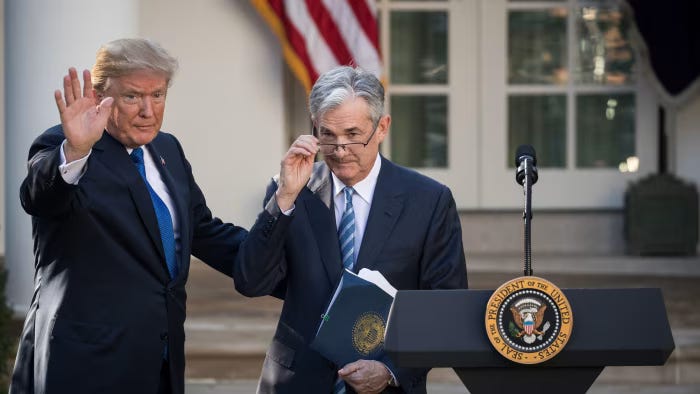
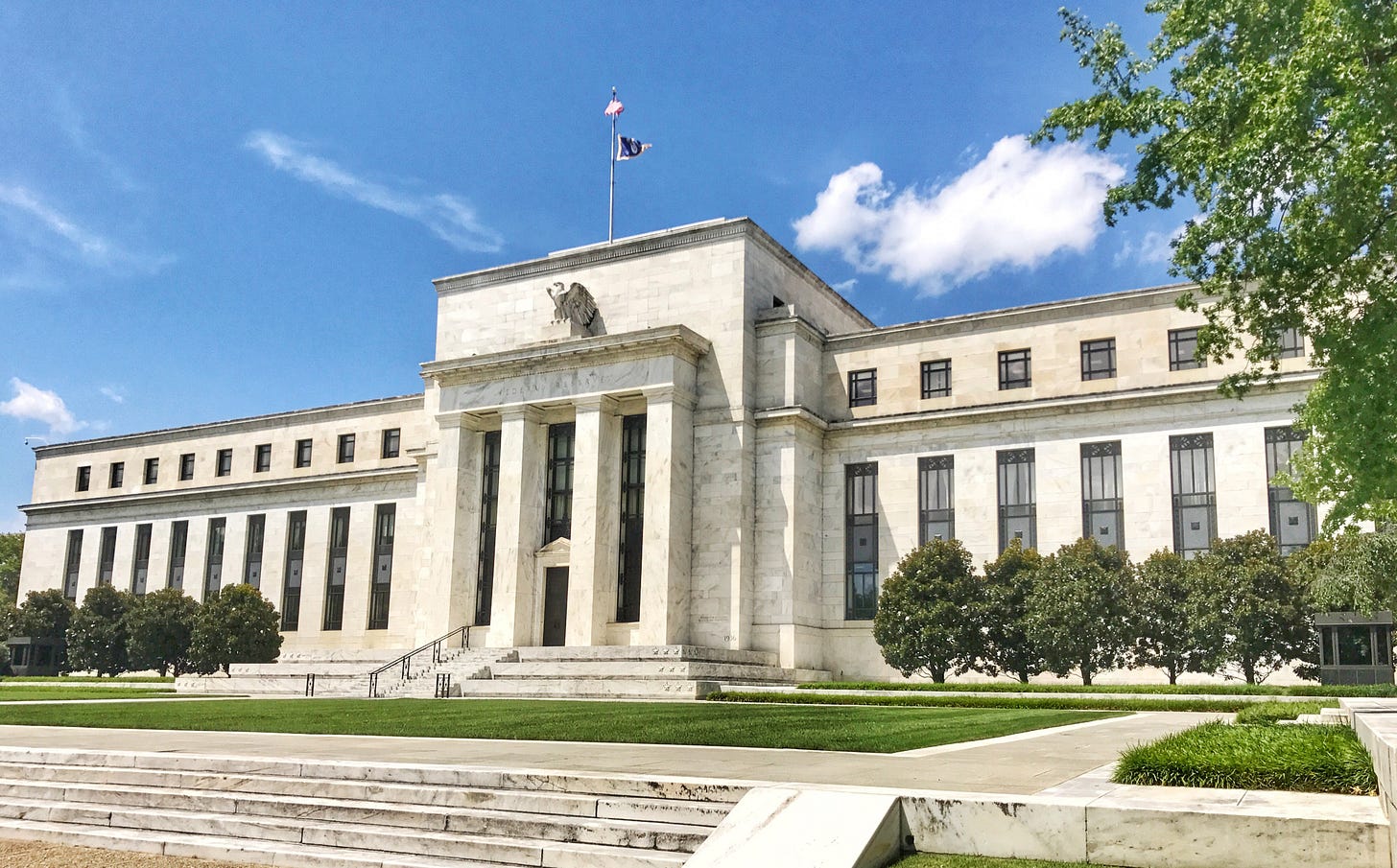
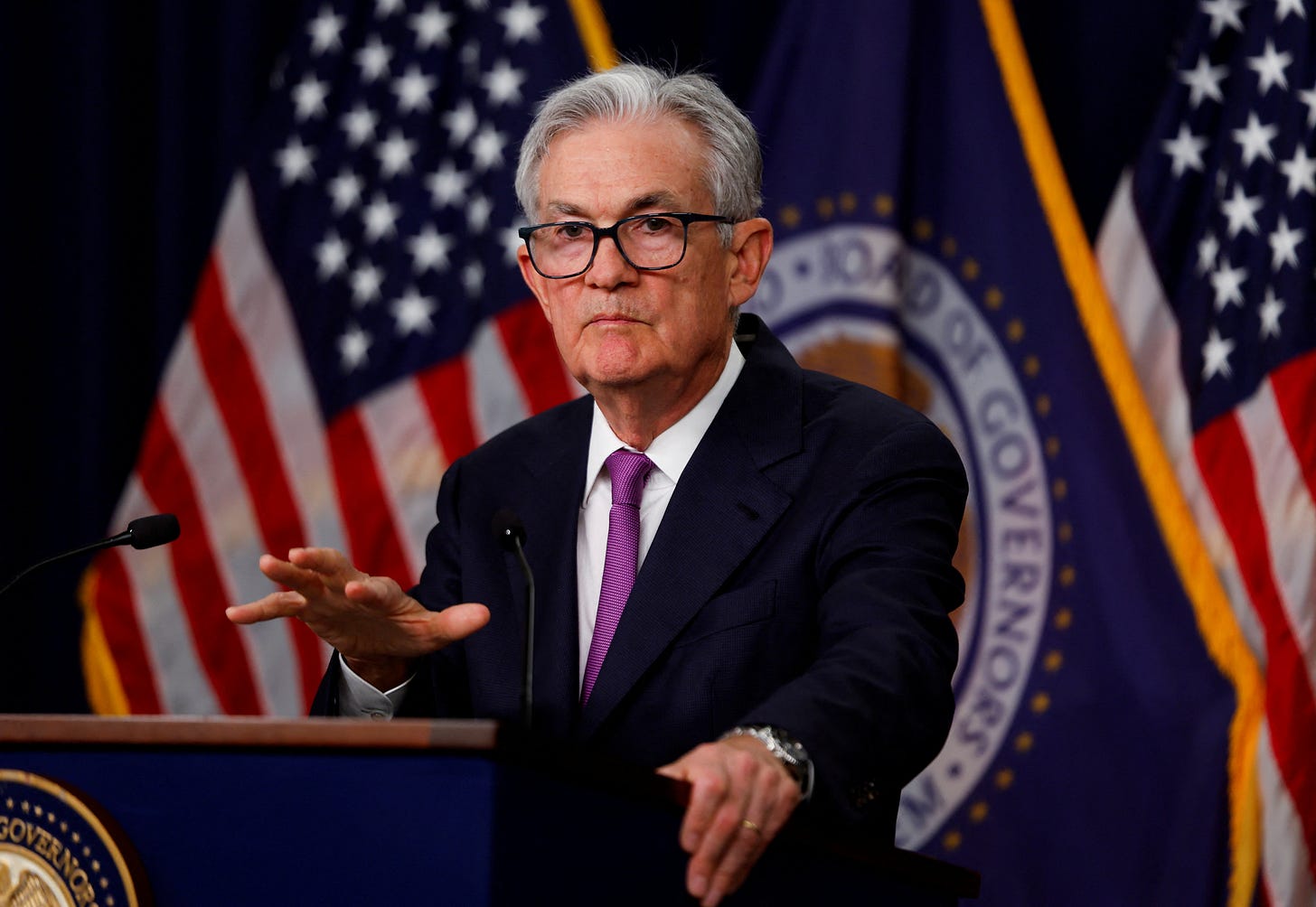
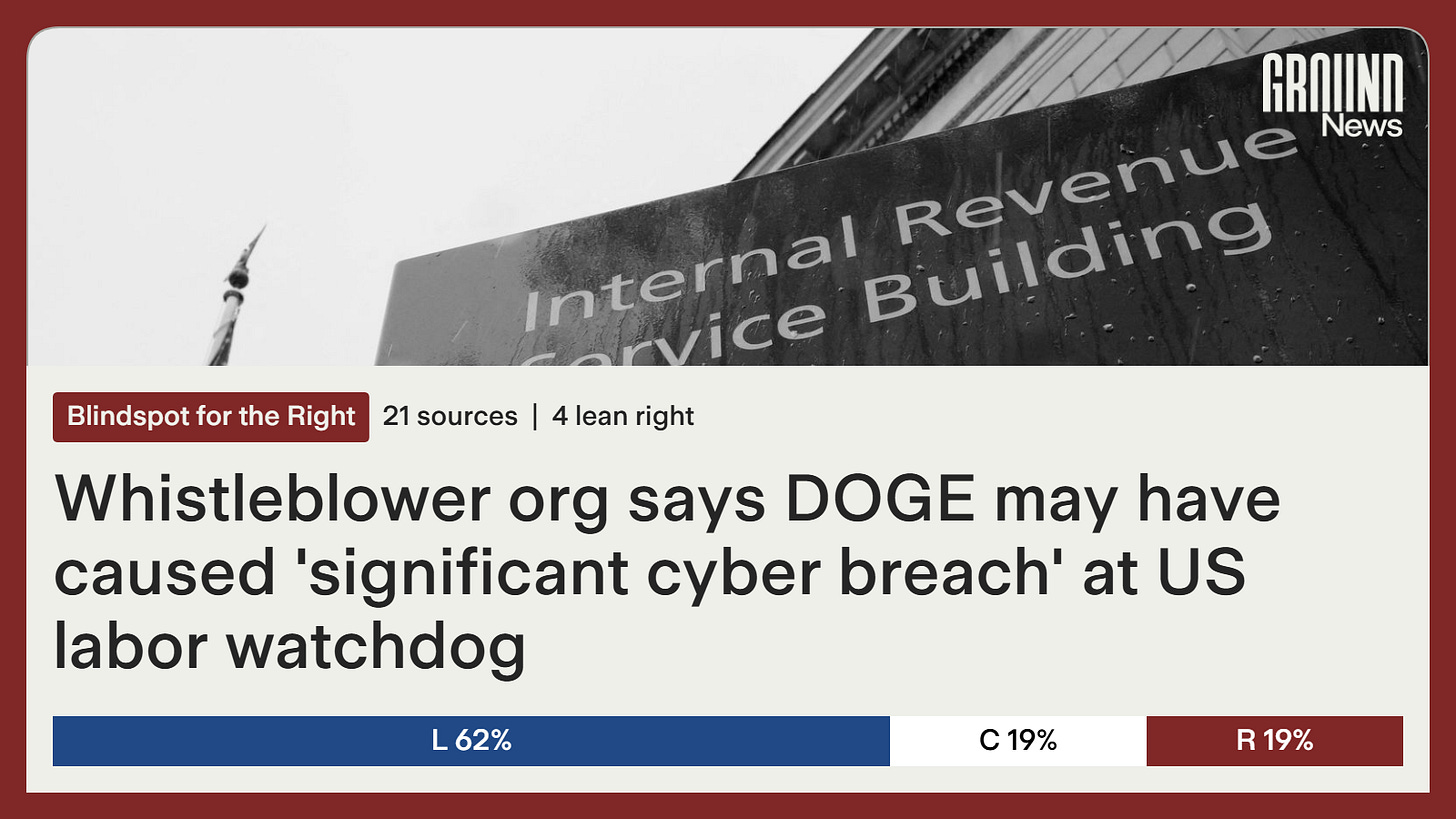
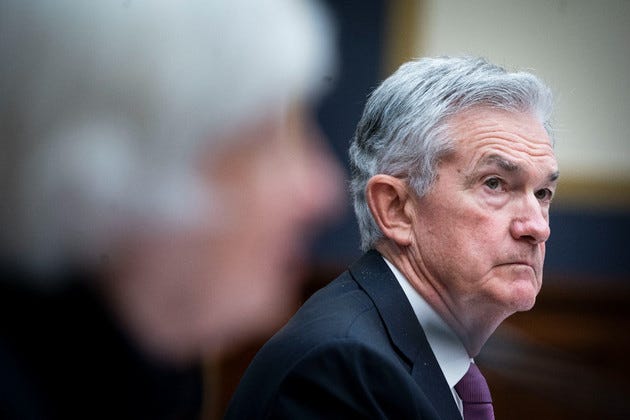

I must say, it’s a rare pleasure to read about an intelligent, competent, and principled public servant. Thank you, Mr. Powell, for standing up to this bully.
You could not pay me enough to have Powell's job, even under an administration NOT trying to actively undermine it. The stress of having to achieve JUST the right balance between two competing goals would send me to an early grave.
I grew weary long ago of everyone Trump disagrees with being labeled a 'loser.' He thinks he is so clever with his little nicknames but he is nothing but a middle-school bully jeering 'loser' at the crowd in order to feel big.